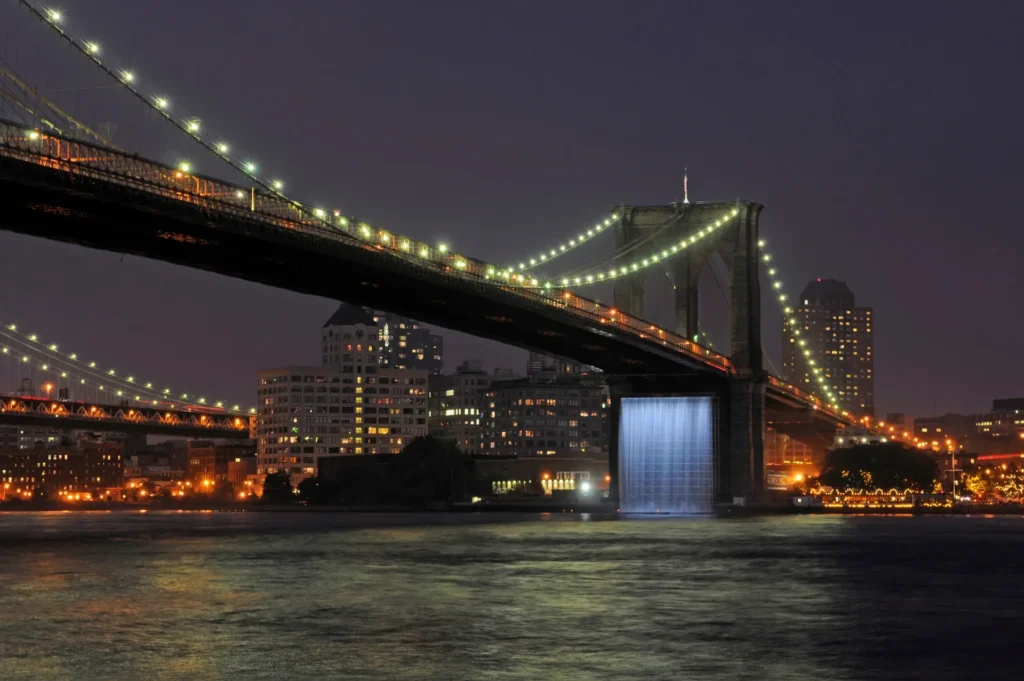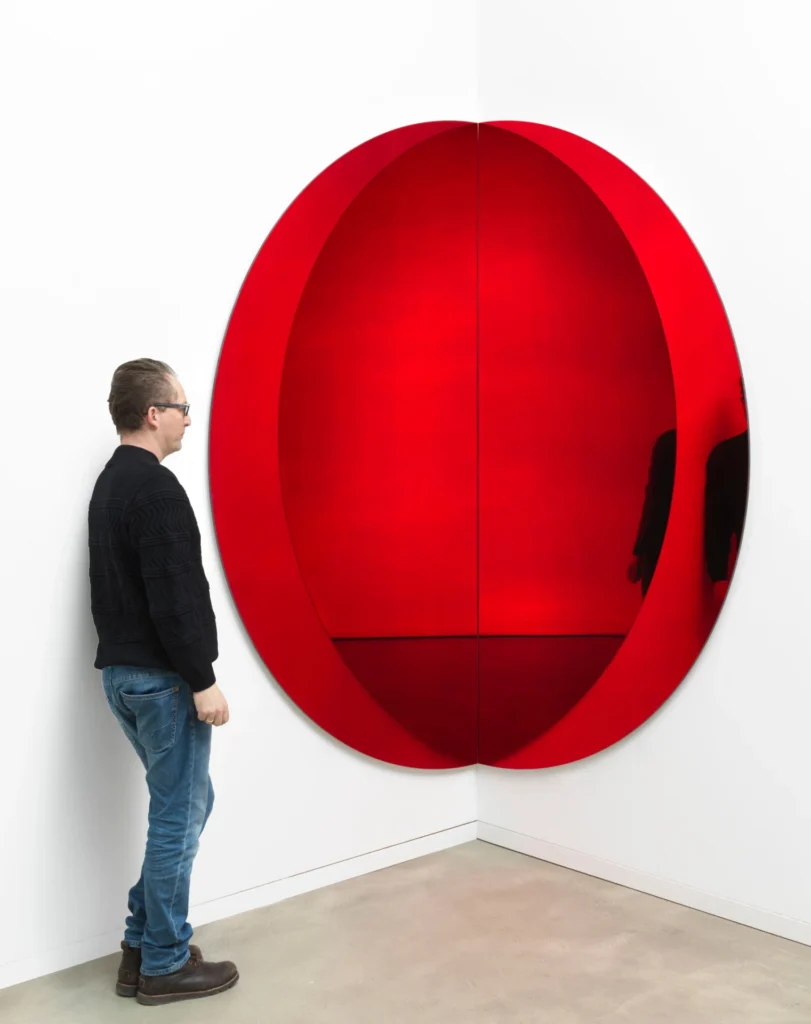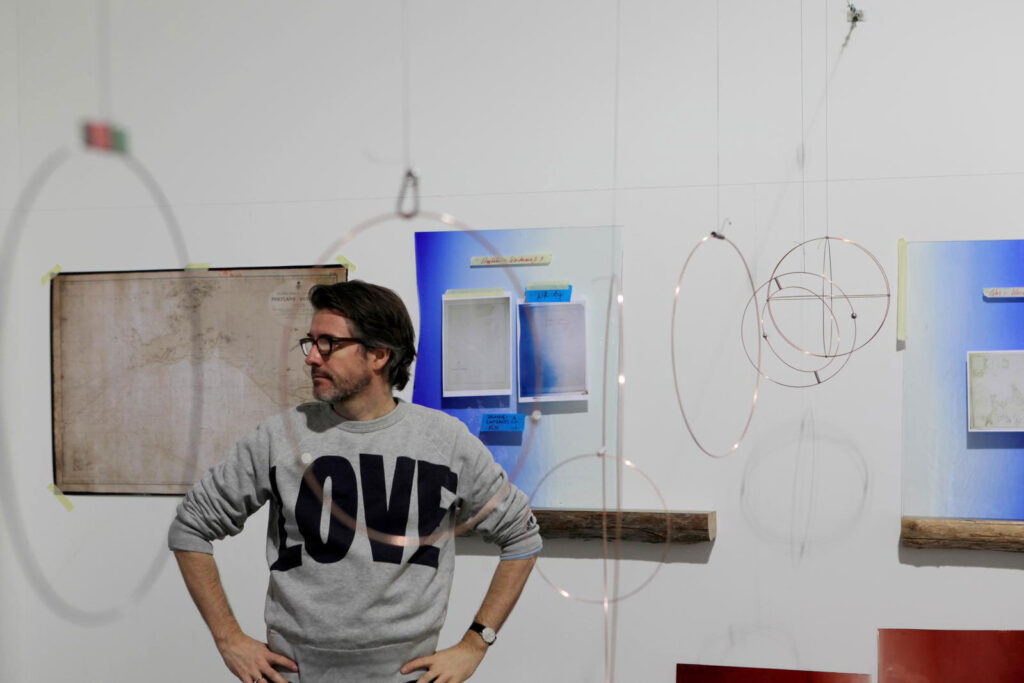5 Reasons to Take Part in Wrocław Off Gallery Weekend
Wrocław Off Gallery Weekend is a unique event that is organized in Wrocław, Poland on the October 18–20, 2024. It networks and unites various...
Guest Profile 16 October 2024
22 April 2024 min Read
For Olafur Eliasson, the creation of artwork is a collaborative endeavor that involves a dedicated team of experts spanning various disciplines within Studio Olafur Eliasson. Shaped by his upbringing in Denmark and a deep connection to Iceland inherited from his parents, Eliasson’s artistic approach reflects the profound impact of the rugged and remote natural landscapes that characterized his childhood.
The focus of his art practice has been on introducing non-traditional ways of perceiving common phenomena and solutions to problems that society faces globally, such as issues of energy poverty, climate change, and migration.1 Eliasson also reaches out beyond his team to broaden his language of art. Through his vast range of works, Eliasson advocates for what he believes in as an activist. He challenges what it means to be an artist in this day and age.
He is particularly interested in breaking through the art scene’s hermetic, often elitist thinking and communication, and expanding the reach of his art.
“Eine Feier, elf Räume und ein gelber Korridor” (“A Celebration, Eleven Rooms, and a Yellow Corridor”) in Eine Feier, elf Räume und ein gelber Korridor: Olafur Eliasson.
This installation might be the most famous work by Eliasson. The sheer scale alone captivated viewers. The Weather Project was a site-specific artwork for the Turbine Hall at Tate Modern in London, and its bright semi-circular screen was perfectly reflected by mirrors covering the entire ceiling and surrounded by an artificial mist that tricked the audience into thinking that it was a full circle, resembling a sun. The truth of the illusion revealed itself when the viewer reached the far end of the wall from the entrance. But the most intriguing part of this installation was how gallery-goers in the hall utilized the space as Eliasson expected and intended to.
In “Museums Are Radical,” he writes about how the weather impacts life in numerous ways. Also in the same text, the artist explains that by bringing one of the biggest factors of weather—the sun—inside the walls of a gallery, he toys with the idea of how art institutions set themselves apart from the real world and still try to discuss topics from the world outside effectively and how weather cannot be separated from the city environment even if we try to control it by different means.
Eliasson broke this institutional rule by making the installation a space for human engagement, having a specialized promotion of the work, challenging the traditional use of space in the museum/gallery, and being transparent with the process of presentation with the audience. He explains (in “Museums Are Radical”) that “an exhibition cannot stand outside its social context, and we have a responsibility to understand that we are a part of what we are evaluating as well as the result of it. Museums can be radical.”

Olafur Eliasson, The New York City Waterfalls, 2008, Brooklyn Bridge, New York City, NY, USA. Photo: Julienne Schaer / Courtesy Public Art Fund. Artist’s website.
Along the New York waterfront, four skyscraper-size manmade waterfalls appeared in June 2008: four waterfalls were located at the Brooklyn Bridge, the Brooklyn Piers, Governors Island, and Pier 35. They were commissioned by the Public Art Fund in New York City. Eliasson wanted to open up a conversation about the possible factors that make one place a symbolic image.
Marcella Beccaria notes that “Fully visible, the scaffolding structures emphasized the perception of nature as cultural construction – a key concept in Eliasson’s practice since his early days.”2 Building almost 40-meter-tall artificial waterfalls made out of steel scaffolding is an experiment to see how people would view and react to this “nature” that seems to be out of place.
The artist says in the artist’s statement In The New York City Waterfall: “The Waterfalls will invite people to explore them on their own, but due to their size and locations, they will also generate expectations, opinions, and actions that can be shared. This relationship between individual experiences and the social context is crucial for me… by seeing a work of art… we become co-producers of the work and its social context.” The power of public art is an essential part of this work: being accessible to all people, not only to gallery-goers.
Eliasson’s work lives in the active exchange between his creations and the viewers.
One of the most talked about issues of the climate crisis is the melting of glaciers and sea life. In a lifetime, not many people would have a chance to go to the geographical poles and see and touch the ice. Being physically far away from this phenomenon makes it harder for people around the world to realize the severity of it and take considerable action.
For this project, Olafur Eliasson and Minik Rosing, a geologist, came together to shorten the physical distance between the problem and the people who are in charge of taking meaningful action.
Ice Watch installation comprises twelve imposing blocks of ice, sourced from the Greenland ice sheet and harvested from a fjord near Nuuk. These ice blocks were arranged in a clock formation, creating a striking display in prominent public spaces on three separate occasions.
The installation coincided with international climate change conferences and garnered attention at significant locations: Copenhagen’s City Hall Square in 2014, Paris’ Place du Panthéon in 2015, and London positioned outside Bloomberg’s European headquarters and Tate Modern during the UN Climate Conference COP24 (Ice Watch, 2014, Olafur Eliasson Website).
Notably, the interaction between the audience and the installation accelerated the ice-melting process: as people touched and approached the ice blocks, they hastened their dissolution. This dynamic interaction underscored the stark reality of climate change, prompting viewers to contemplate the profound implications of seemingly innocuous daily actions on the global climate crisis and the urgency for meaningful governmental initiatives.

Olafur Eliasson, The Round Corner, 2018, Red Brick Art Museum, Beijing, China. Photo: Jens Ziehe. Artist’s website.
In a corner of the Red Brick Art Museum in Beijing, the red reflective circular glass was displayed. In comparison to Eliasson’s other large-scale installations, this comparatively small work seems to wait for the viewers to pass by and catch a glimpse of their reflections. The way two ellipses-shaped glass are cut and placed in the corner creates an illusion of a spinning disk and at the same time makes the gallery-goers momentarily think that they exist in the space they presently stand and also in the mirrors of the installation; the boundaries blur.
The ordinary act of gazing into a mirror is so ingrained in human behavior that it often goes unquestioned. However, when unexpectedly confronted with the reflection of oneself in an unfamiliar context, such as encountering this artwork, the experience becomes complex and thought-provoking. This unexpected encounter offers a unique opportunity to explore how the human brain perceives reality in diverse ways, prompting viewers to contemplate the intricacies of their own perceptions.

Olafur Eliasson and Frederik Ottesen, Little Sun, 2012, Addis Ababa. Photo: Merklit Mersha. Artist’s website.
This innovative project came into the world in 2012 with the collaboration of a solar engineer, Frederik Ottesen. Eliasson and Ottesen developed a small lamp called Little Sun that can easily fit into a child’s hand and is powered by solar energy. The inspiration for the bright yellow lamp that resembles a flower and the sun comes from the Ethiopian meskel flower, a national symbol of positivity and beauty.3 The goal of the project is to provide renewable energy to remote areas, mainly Sub-Saharan Africa, that lack access to electricity and sustainable energy. It also marks the initial distribution of the lamps to those in Ethiopia who did not have access to electricity.
Little Sun is available at affordable prices in the mentioned areas by selling the lamps three times their price in America, Europe, and to those who are in the position to do so. Another aspect of this artwork is that the more people possess and use the lamp, the more voices speak for renewable energy access and climate action. The foundation of the same name was established in 2017 to increase the impact of accessible renewable energy for those in need such as children in school and refugees. With Litte Sun, Eliasson takes art out of institutions and gives total agency to the viewer.

Olafur Eliasson in Studio Olafur Eliasson. Artist’s website.
In the book Eine Feier, elf Räume und ein gelber Korridor: Olafur Eliasson, Wulf Herzogenrath mentions a parallel between Leonardo da Vinci and Eliasson to be an artist-researcher and continues to say that society requires more artists like him to go beyond art and introduce new perspectives through artworks. The world needs more space for people to experience natural elements that are no stranger to them, but in a way that offers fresh points of view and helps them understand the world around them better.
Olafur Eliasson continues to surprise us with his ability to open up the viewer’s eyes, often using sensory elements that require them to lean in and contemplate. If you want to find out more about Eliasson’s creative processes and his studio, this video should give you a good idea of his work and how he develops new projects.
Marcella Beccaria and Olafur Eliasson: Olafur Eliasson: OE. 2013. Translated by Simon Turner. London, England: Tate Publishing.
Olafur Eliasson: Eine Feier, elf Räume und ein gelber Korridor: Olafur Eliasson. 2014. Berlin: DISTANZ Verlag.
Olafur Eliasson: Olafur Eliasson: In Real Life. 2019. Edited by Mark (Mark Benjamin) Godfrey. London: Tate Publishing.
DailyArt Magazine needs your support. Every contribution, however big or small, is very valuable for our future. Thanks to it, we will be able to sustain and grow the Magazine. Thank you for your help!